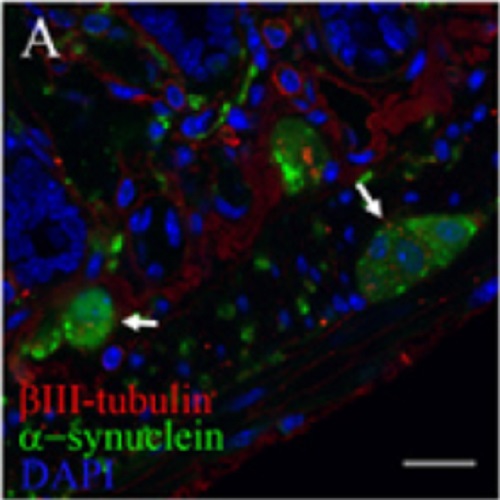Oral administration of rotenone using a gavage and image analysis of alpha-synuclein inclusions in the enteric nervous system.
In Parkinson's disease (PD) patients, the associated pathology follows a characteristic pattern involving inter alia the enteric nervous system (ENS) (1,2), the olfactory bulb (OB), the dorsal motor nucleus of the vagus (DMV)(3), the intermediolateral nucleus of the spinal cord (4) and the substantia nigra, providing the basis for the neuropathological staging of the disease(4,5). The ENS and the OB are the most exposed nervous structures and the first ones to be affected. Interestingly, PD has been related to pesticide exposure(6-8). Here we show in detail two methods used in our previous study (9). In order to analyze the effects of rotenone acting locally on the ENS, we administered rotenone using a gavage to one-year old C57/BL6 mice. Rotenone is a widely used pesticide that strongly inhibits mitochondrial Complex I (10). It is highly lipophylic and poorly absorbed in the gastrointestinal tract (11). Our results showed that the administration of 5 mg/kg of rotenone did not inhibit mitochondrial Complex I activity in the muscle or the brain. Thus, suggesting that using our administration method rotenone did not cross the hepatoportal system and was acting solely on the ENS. Here we show a method to administer pesticides using a gavage and the image analysis protocol used to analyze the effects of the pesticide in alpha-synuclein accumulation in the ENS. The first part shows a method that allows intragastric administration of pesticides (rotenone) at a desired precise concentration. The second method shows a semi-automatic image analysis protocol to analyze alpha-synuclein accumulation in the ENS using an image analysis software.

- J Vis Exp 2010 Oct 26;(44)
- 2010
- Neurobiology
- 21085094
- PubMed
Enabled by:
